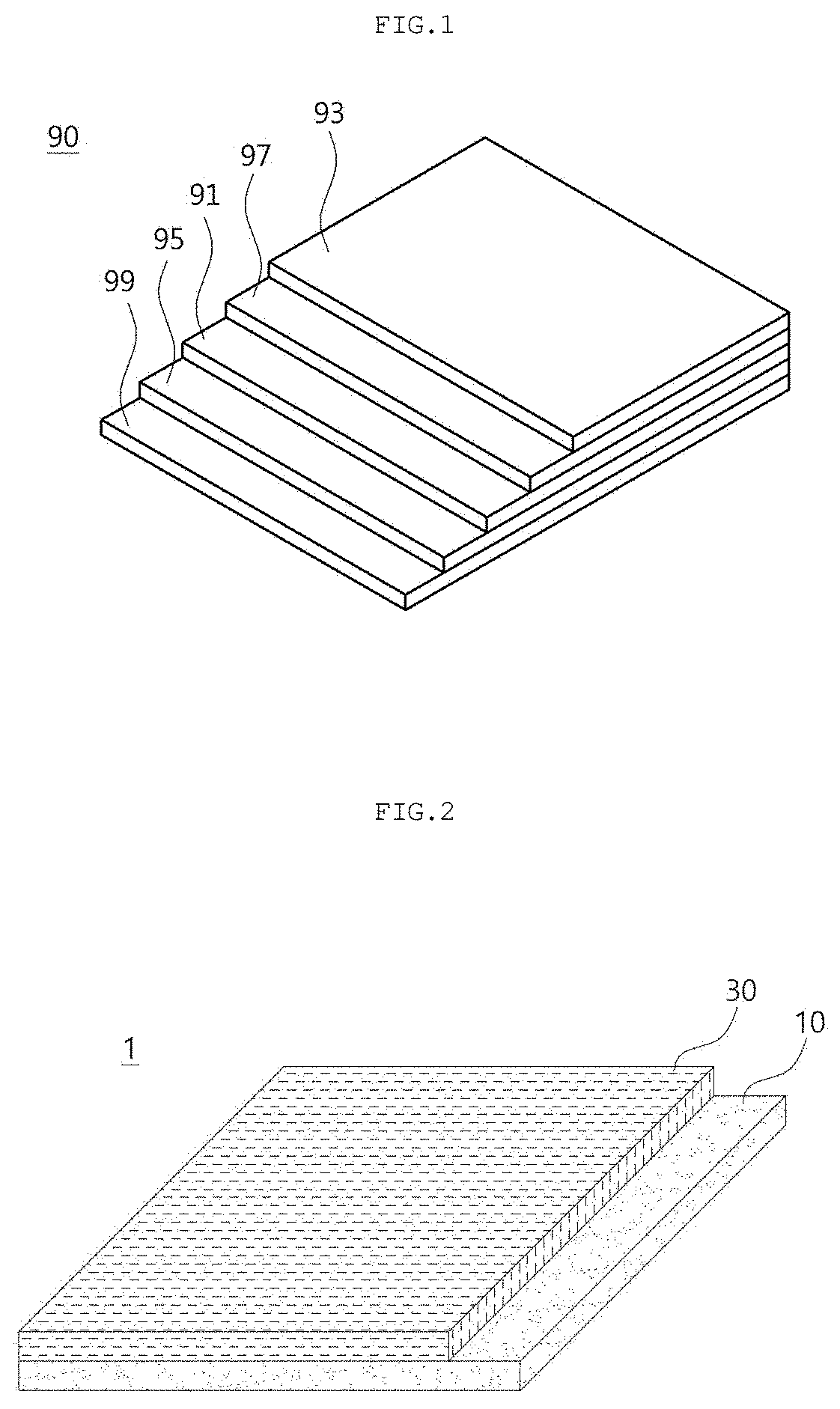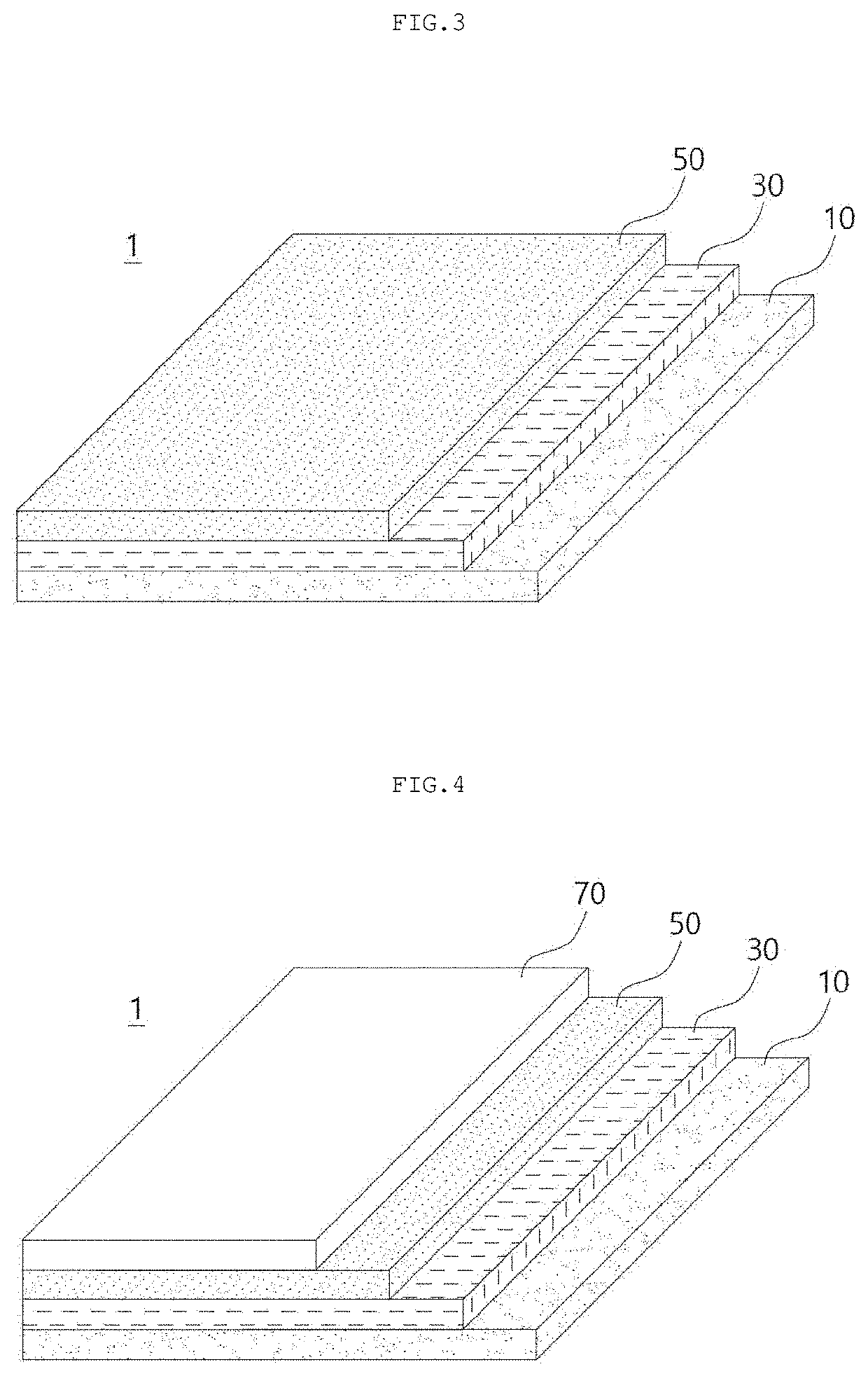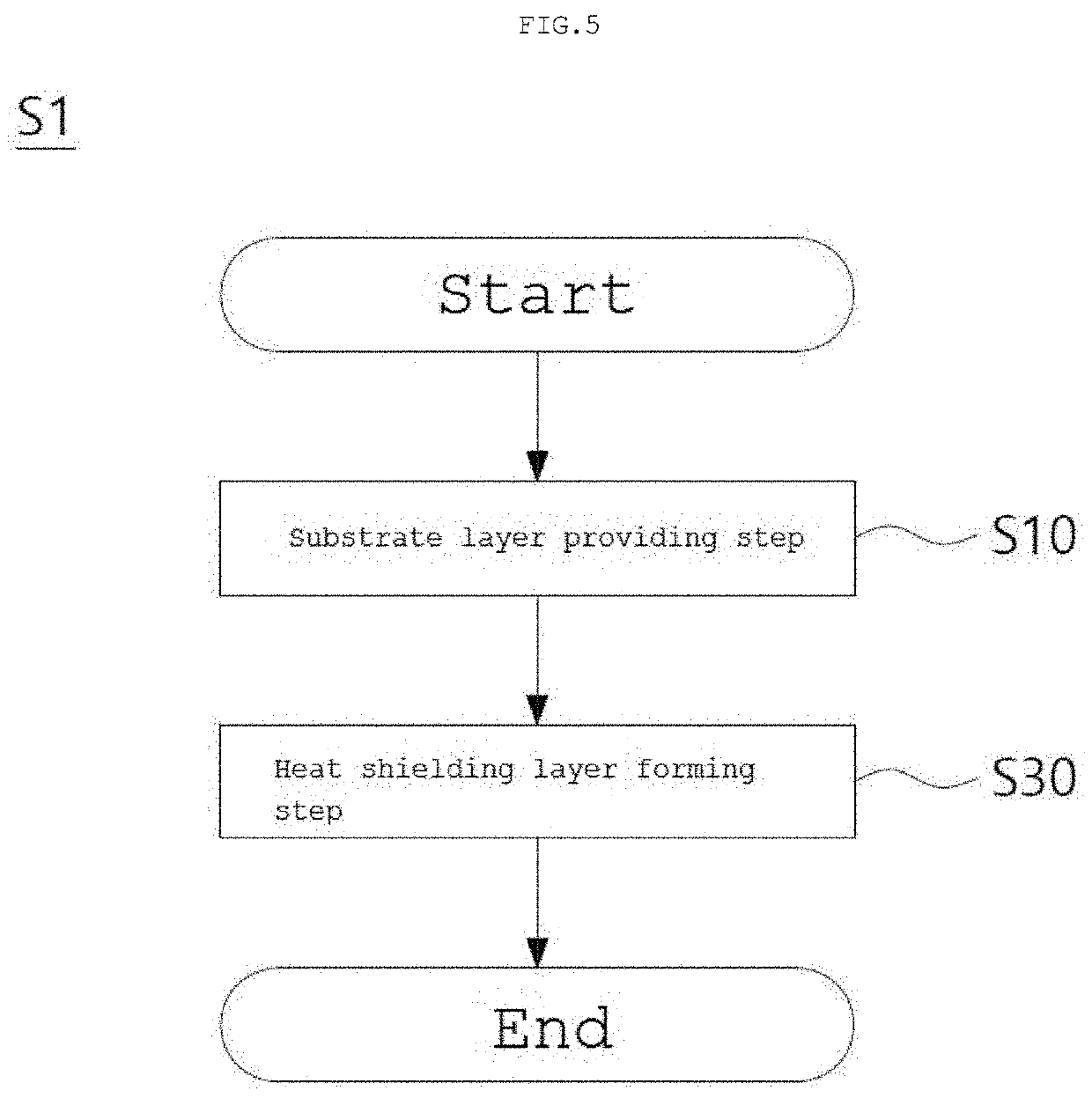Environment-Friendly Heat Shielding Film Using Non-radioactive Stable Isotope and Manufacturing Method Thereof
a non-radioactive stable isotope, environmental protection technology, applied in film/foil adhesives, radiation-absorbing paints, etc., can solve the problems of radiation increasing the risk of radiation in proportion, cell disruption, cell deformation, etc., to facilitate the dispersion of agglomerated powder, facilitate the dispersion of sol, and enhance the optical characteristics and coating adhesive strength of a film
- Summary
- Abstract
- Description
- Claims
- Application Information
AI Technical Summary
Benefits of technology
Problems solved by technology
Method used
Image
Examples
example 1
1) EXAMPLE 1
Preparation of Non-Radioactive Stable Isotope Tungsten Bronze Compound
[0172]First, 30 wt % of a white powder of sodium tungstate dihydrate (Na2WO4.2H2O) and 15 wt % of potassium carbonate (KCO3) were placed together with distilled water into a 4-neck flask reactor, and then the mixture was completely dissociated into a colorless and transparent liquid by slow agitation for 3 hours while the temperature was maintained at 80° C. by using a heating mantle. In addition, 50 wt % of the organic acid fumaric acid as a dropping material was dissociated in distilled water, and then dropped into the flask reactor, which contained the previous precursor dissolved therein, by using a dropping funnel, at a constant rate for 20 minutes, so that the colorless and transparent solution was gradually formed into a yellow viscous liquid. After aging for a certain period of time, the reaction is terminated, and filters and byproducts are washed, thereby obtaining 45 wt % of a light-gray rea...
example 2
2) EXAMPLE 2
[0184]Example 2 was prepared in the same conditions as in Example 1 except that in the synthesis procedure of a non-radioactive stable isotope tungsten bronze compound powder, 15 wt % of sodium carbonate (Na2CO3) composed of only a sodium stable isotope (23Na) was introduced instead of potassium carbonate (KCO3) as a starting raw material.
[0185]That is, a non-radioactive stable isotope sodium tungsten oxide ((23)Nax(182,183,184,186)WO(3-n)) was formed by replacing existing potassium with sodium as a positive element in the composition of the non-radioactive stable isotope potassium tungsten oxide ((39,41)Kx(182,183,184,186)WO3-n))
example 3
3) EXAMPLE 3
[0186]Example 3 was prepared in the same conditions as in Example 1 except that in the synthesis procedure of a non-radioactive stable isotope tungsten bronze compound powder, 15 wt % of cesium carbonate (Cs2CO3) composed of only a cesium stable isotope (133Cs) was introduced instead of potassium carbonate (KCO3) as a starting raw material.
[0187]That is, a non-radioactive stable isotope cesium tungsten oxide ((133)Csx(182,183,184,186)WO(3-n)) was formed by replacing existing potassium with cesium as a positive element in the composition of the non-radioactive stable isotope potassium tungsten oxide ((39,41)Kx(182,183,184,186)WO3-n)).
PUM
| Property | Measurement | Unit |
|---|---|---|
| thickness | aaaaa | aaaaa |
| atomic number | aaaaa | aaaaa |
| visible light transmittance | aaaaa | aaaaa |
Abstract
Description
Claims
Application Information
 Login to View More
Login to View More - R&D
- Intellectual Property
- Life Sciences
- Materials
- Tech Scout
- Unparalleled Data Quality
- Higher Quality Content
- 60% Fewer Hallucinations
Browse by: Latest US Patents, China's latest patents, Technical Efficacy Thesaurus, Application Domain, Technology Topic, Popular Technical Reports.
© 2025 PatSnap. All rights reserved.Legal|Privacy policy|Modern Slavery Act Transparency Statement|Sitemap|About US| Contact US: help@patsnap.com



